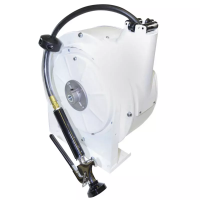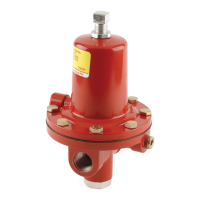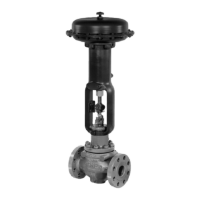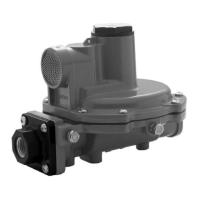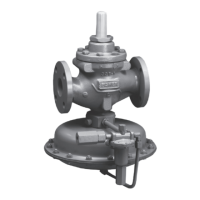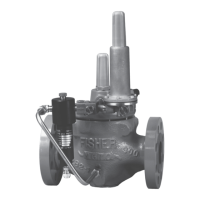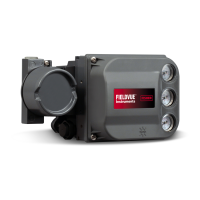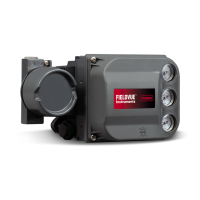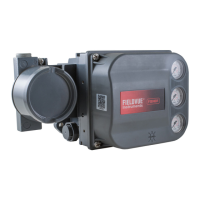2502 Series
12
cage or vessel, refer to the appropriate sensor instruc-
tion manual for assistance. The method of removing
the displacer or torque tube arm and attached control-
ler will vary with the type of sensor.
For a caged sensor with top equalizing connection, it
may be appropriate to remove the entire cage from the
vessel before disassembling.
CAUTION
If the displacer is to be disconnected
from the displacer rod before the sensor
assembly is removed from the cage or
vessel, provide a means of supporting
the displacer to prevent it from dropping
and suffering damage. The spuds or
stem end pieces on all displacers have
holes suitable for inserting rods or other
supports.
Additionally, a threaded rod may be
installed into the 1/4-inch 28 UNF
threaded hole in the displacer spud or
stem end piece of top-mounted cageless
and all caged sensors. For some top-
mounted sensors with long displacers,
it may also be possible to remove the
sensor through the access hole in the
sensor head.
For Type 249BP sensor with the travel
stop, the stem end piece pins will se-
cure the displacer as long as the travel
stop plate is installed and the sensor
head is in position.
Determining Suspended Weight for
Calibration
CAUTION
To avoid overloading a torque tube
sized for interface or density applica-
tions under dry conditions, consult your
Fisher Controls sales office or sales rep-
resentative for the maximum allowable
substitute weight Ws that can be used
with your particular construction.
To determine the total weight that must be suspended
from the displacer rod to simulate a certain condition
of liquid level or specific gravity, solve the following
equation:
W
s
= W
d
- [(0.0361) (V) (SP GR)]
where:
W
s
= Total suspended weight in pounds (should
never be less than 0.5 pounds). For a unit with
a horizontal displacer, make sure the center of
gravity of the substitute weight is where it
would be on the actual displacer.
Note
For liquid level control only, simulate
the lower range limit of the input span
by suspending the displacer from the
displacer rod. For other values of input
span, remove the displacer and suspend
the appropriate weight as determined in
the equation above.
W
d
= Weight of the displacer, in pounds (determine
by weighing displacer).
0.0361 = Weight of one cubic inch of water (specific
gravity = 1.0), in pounds.
V = Volume of the displacer in cubic inches, that
would be submerged at the level required by
the calibration procedure. Or,
V = π/4 (displacer diameter)
2
x (length of displacer
submerged)
SP GR = Specific gravity of the process liquid at
operating temperature.
For interface level measurement, the equation be-
comes:
W
s
= W
d
- [(0.0361) (V
1
) (SP GR
1
) +
(0.0361) (V
h
) (SP GR
h
)]
where:
V
1
= Volume of the displacer submerged by the
lighter liquid, in cubic inches.
Or,
V = π/4 (displacer diameter)
2
x (length of the dis-
placer submerged)
SP GR
1
= Specific gravity of the lighter liquid at op-
erating temperature.
V
h
= Volume of the displacer submerged by the
heavier liquid, in cubic inches.
Or,
V = π/4 (displacer diameter)
2
x (length of the dis-
placer submerged)
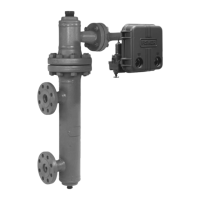
